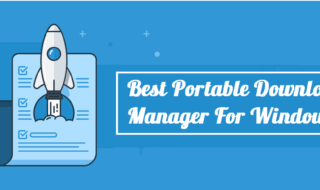
Remember when Facebook changed to the TimeLine layout? The uproar could be heard around the world, and yet it was all we knew one month after the fact. Change always feels bigger than it is in the moment, particularly when it comes to a digital platform that we use almost every day. That’s until you are benefitting from that usability and enhanced design of modern software that is created to save time and hassle. Invoicing software yields that same power. That familiar short-lived awkwardness might be there at the start, followed by smooth sailing for your finance team and greater business. Let’s discuss how you can make the transition.
Contents
One interface
You’re likely seeking the services of leading invoicing software as you and your business have grown tired of the old counterproductive invoicing system that you and many before you have inherited. It’s not surprising, and it’s actually going to be an easier process to transition than you believe. Invoicing software is not a hard sell for your team, so remember to make it clear that all there spreadsheets, paperwork and paper chasing will be replaced by one clean interface. Many invoicing software providers will even extend a trial period so that your team can test the software, which might be a route to take if there are a few team members on the fence.
Improvements to workflow
More often than not, it’s the workflow bottlenecks that encourage us to explore new software, and not the software itself. When making the transition, it’s important to position the change as an improvement to workflow rather than introducing new processes for the sake of it. This might be the defining factor in moving things along quicker, so demonstrate how the end of the month and other stressful times in the calendar will be minimised significantly with the aid of intuitive invoicing software. A simpler workflow makes achieving success simpler.
Educate your contractors, suppliers and freelancers
There may be great internal excitement with the new invoicing software, but to third parties who rely upon your business for payment – they may want to get a heads up on what’s changing. Managing freelancers and contractors is your responsibility, and if handled correctly it can be a long and fruitful relationship. Carve out some time in the calendar to do a share screen session with your contractor or freelancer and walk them through the invoicing software changes, and all relevant tasks that will impact their financial touchpoint with your business. Who knows, perhaps these improvements will make you a preferred business to deal with.
Discuss your contingency plan
The first month in it’s all systems go, and your invoicing responsibilities are more manageable. But if there was to be a technical issue with your account of setup, what is your contingency plan? Keep your existing invoicing framework active for a few months after the transition, to account for any mishaps and emergency payments that will need to be put through. You may feel it is a bad omen to start out a new process with a conversation about its demise, but this is a smart business practise and will save you and your disgruntled supplies a few heated conversations down the line.
There is only upside to considering a modern invoicing software, although unfortunately, not all will share this sentiment at the beginning. Take your time with learning the ropes, and make training and system compliance compulsory in your team and business. Your invoicing software supplier will also be on hand to come to your business or be on the other end of the phone, should you require guidance in the initial transition period.



